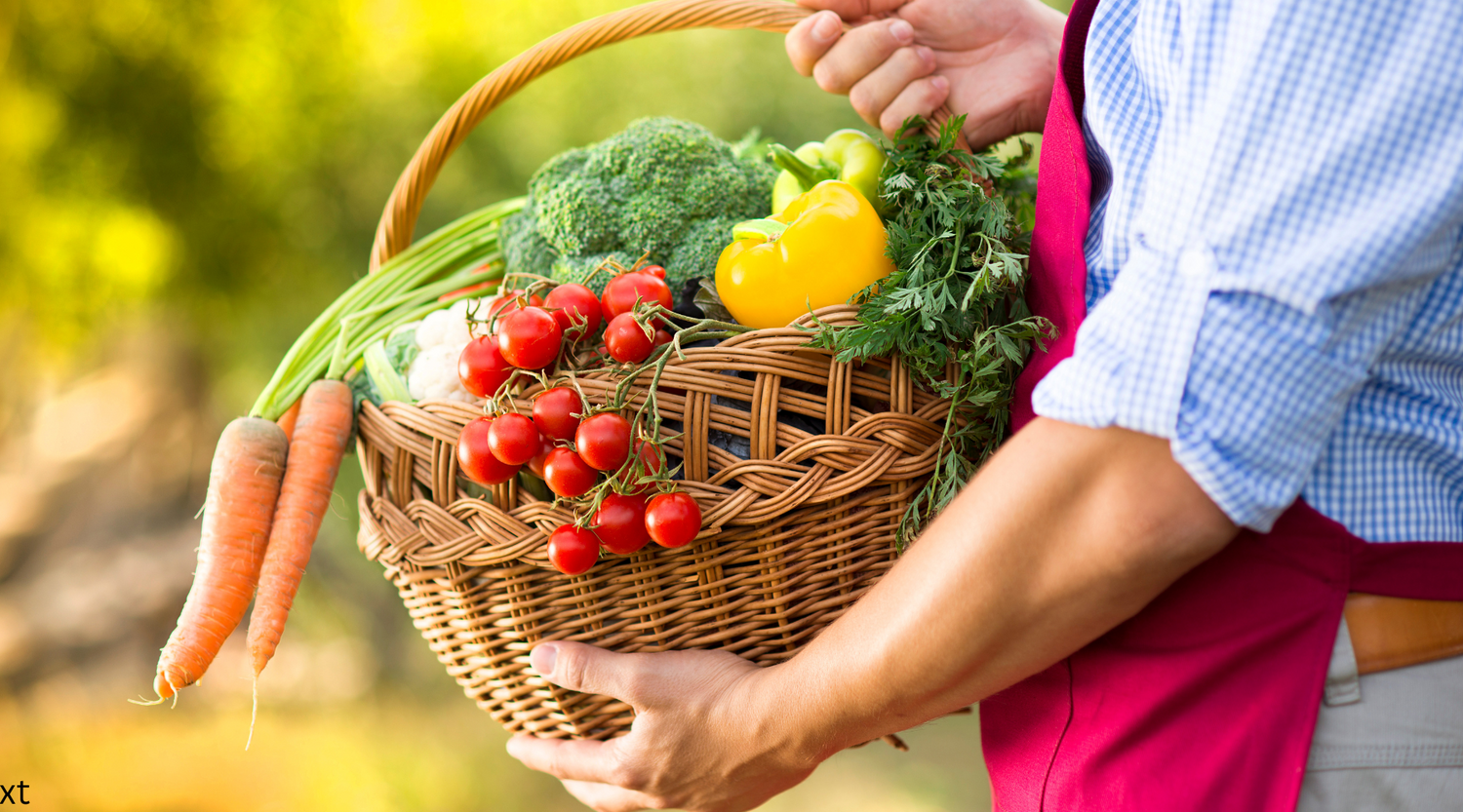As the chill of winter fades and the days begin to warm, gardeners everywhere feel the excitement of spring. It's the season of renewal, growth, and vibrant blooms. For those with raised garden beds, spring planting is an especially rewarding time. Raised beds offer numerous advantages, from better soil control to easier weed management, making them an ideal choice for both novice and experienced gardeners.
In this blog post, we’ll explore the joys and benefits of spring planting in your raised garden bed. Whether you're a seasoned gardener or just starting out, you'll find tips and insights to help you make the most of this fruitful season. From selecting the right plants to ongoing maintenace, we’ll guide you through the essential steps to ensure a thriving, bountiful garden. Get ready to dig in and watch your garden come to life this spring!
Why Choose Raised Garden Beds?
Raised garden beds offer numerous advantages that make them an excellent choice for spring planting. They allow for better control over soil quality, enabling gardeners to create an ideal growing environment rich in nutrients and well-drained. This controlled environment reduces the prevalence of weeds and pests, as the elevated structure makes it easier to manage unwanted intruders. Additionally, the defined borders of raised beds can deter pests like slugs and snails, and protective barriers can be easily added to safeguard your plants.
Moreover, raised garden beds enhance accessibility, making gardening more comfortable and enjoyable, especially for those with mobility issues. The elevated height reduces the need for bending and kneeling, making planting, weeding, and harvesting easier tasks. Raised beds also help extend the growing season by warming up more quickly in the spring and retaining heat longer in the Autumn, allowing for earlier planting and later harvesting. On top of these practical benefits, raised beds add aesthetic appeal to your garden, creating neat, organized spaces that can be customised to fit any design preference. With these benefits, it's clear why our raised garden beds are a popular choice among gardeners.

Preparing Your Raised Garden Bed
Before you start planting, it's crucial to prepare your raised garden bed properly:
- Soil Preparation: Improving soil in a raised garden bed after harvesting the last winter crops is crucial for a successful spring planting. Begin by clearing out any remaining plant debris and weeds to prevent disease and pests. Next, incorporate organic matter such as compost, well-rotted manure to replenish nutrients and enhance soil structure. Testing the soil pH and adjusting it if necessary can help optimise nutrient availability. Adding a balanced organic fertiliser can further boost soil fertility. Aerate the soil by gently turning it with a garden fork to improve drainage and root penetration.
- Crop Rotation: Crop rotation is a useful technique for growing vegetables at home. By planting different veggies in the same garden bed each season, you can keep your soil healthy and reduce problems with pests and diseases. For example, if you grow tomatoes in one spot this year, try planting beans there next year. This helps replenish the nutrients in the soil since different plants use different nutrients. It also prevents pests and diseases that target specific plants from getting established. By rotating your crops, your home garden will be more productive and easier to manage.
-
Mulching: Apply a layer of mulch to retain moisture and regulate soil temperature. Using mulch in raised garden beds offers numerous benefits that can significantly enhance the health and productivity of your garden. One of the primary advantages is moisture retention. Mulch acts as a barrier, reducing evaporation from the soil surface and helping to keep the soil consistently moist. This is particularly beneficial in raised beds, where soil tends to dry out more quickly than in-ground gardens. By conserving moisture, mulch reduces the need for frequent watering, which is both time-saving and environmentally friendly.
In addition to moisture retention, mulch helps regulate soil temperature, keeping it cooler in the summer and warmer in the winter. This creates a more stable environment for plant roots, promoting healthier growth. Mulch also suppresses weeds by blocking sunlight, which prevents weed seeds from germinating and competing with your plants for nutrients and water. Organic mulches, such as straw, wood chips, or shredded leaves, gradually decompose, adding valuable organic matter to the soil and improving its structure and fertility over time. This continuous addition of organic material can enhance soil aeration and drainage, which are crucial for the well-being of plants in raised beds.
-
Irrigation: Set up an efficient irrigation system. Using a drip irrigation system in raised garden beds offers numerous benefits, making it an efficient and sustainable choice for gardeners. Drip irrigation delivers water directly to the plant roots through a network of tubes and emitters, minimising water waste and ensuring that each plant receives the precise amount of moisture it needs. This method reduces evaporation and runoff, making it ideal for conserving water and maintaining soil health. Additionally, drip irrigation helps prevent the spread of diseases by keeping the foliage dry and reducing the likelihood of fungal infections. It also allows for easy customisation and scalability, enabling gardeners to adjust the system to accommodate different plant types and bed sizes. Integrating a drip irrigation system in raised garden beds promotes healthier plants, more efficient water use, and reduced labor, making gardening a more enjoyable and productive experience.
Choosing your Spring Veggies
Ultimately, choose vegetables that you and your family enjoy eating, providing they fall into the spring growing season. Growing your favourite vegetables can make gardening more rewarding and ensure that your harvest will be put to good use. I like to experiment with one new crop each season, and enjoy trying out new recipes once harvested to see I can add to my list of favourites for next spring.
Spring in Australia can vary significantly depending on your region, so it's important to choose plants suited to your local climate, and in consideration of the amount of sunlight your raised garden bed will receive. Plant the cool-season crops in the mild temperatures of spring, after frost has passed and the warm-season crops as the days get longer and temperatures rise. Consider succession planting, planting new crops at intervals throughout the growing season to ensure a continuous harvest.
- Leafy Greens: Lettuce, spinach, arugula, Swiss chard, and kale.
- Root Vegetables: Radishes, carrots, beets, and turnips.
- Brassicas: Broccoli, cauliflower, Brussels sprouts, and cabbage.
- Peas: Snow peas, snap peas, and garden peas.
-
Tomatoes

- Peppers: Bell peppers, chilli peppers, and jalapenos.
- Cucumbers
- Squash: Summer squash and zucchini.
- Beans: Bush beans and pole beans.
- Corn
- Eggplant
Companion Planting
Maximise the productivity of your raised garden bed by using companion planting techniques. Companion planting is a gardening technique that involves growing different plant species in close proximity to each other to benefit one or both plants. This practice leverages the natural relationships between plants to enhance growth, deter pests, and improve overall garden health. For example, planting basil alongside tomatoes in raised garden beds can help repel insects that are harmful to tomatoes, while also enhancing the flavour of the tomatoes. Similarly, marigolds can be planted around the edges of raised garden beds to deter nematodes and other pests that might harm vegetable crops.
One of the key advantages of companion planting in raised garden beds is its ability to naturally reduce the need for chemical pesticides and fertilisers. By selecting plants that complement each other's growth habits, gardeners can create a more balanced and resilient ecosystem within their raised beds. For instance, beans can fix nitrogen in the soil, benefiting neighbouring plants like corn, which are heavy nitrogen feeders. Additionally, the diverse plantings in raised garden beds can attract beneficial insects such as bees and ladybugs, which aid in pollination and pest control. Companion planting not only promotes healthier plants but also contributes to a more sustainable and eco-friendly gardening practice, especially when integrated into raised garden bed setups.

Keeping Records
As you expand your veggie patch it becomes more important to keep track of what you have planted and harvesting details. Whilst you can invest in many veggie signs, a simple pop stick will do the trick. Details that I choose to include are the name of the vegetable visible on the front with the earliest harvest date. This alerts me to keep watch for prime harvesting time indicators for that vegetable. On the back I choose to record the variety, this picture is of a Daikon Radish planted from seed 3 weeks ago and is from the Winter Seed Pack supplied by our partners Thrive Sustainability. I also record the date planted on the reverse so I have an accurate record of the complete growing time from seed.
Get ready for your spring planting with our Spring Seed Pack for only $55 including postage, it includes a selection of 10 packets of heirloom open-pollinated vegetable seeds suitable for the spring growing season.
Raised Garden Pest Management
Australian gardens can be prone to various pests and diseases, so it's important to stay vigilant. Check your plants frequently for signs of pests or diseases. Early detection can prevent minor issues from becoming major problems. Encourage natural predators like ladybugs and lacewings to take up residence in your garden. These beneficial insects can help keep pest populations in check. Common pests in Spring include:
- Aphids:
- Signs: Look for clusters of small, soft-bodied insects on new growth, curled leaves, or a sticky residue (honeydew) on plants.
- Management: Spray with a strong stream of water to dislodge them, use insecticidal soap, or introduce beneficial insects like ladybugs.
- Slugs and Snails:
- Signs: Irregular holes in leaves and a silvery slime trail.
- Management: Handpick during the evening or early morning, set out beer traps, or use iron phosphate bait.
- Cutworms:
- Signs: Seedlings cut off at the base, usually at night.
- Management: Use collars around seedlings, till the soil to disrupt larvae, and remove plant debris where they hide.
- Flea Beetles:
- Signs: Tiny holes in leaves, especially on young plants.
- Management: Use row covers, apply neem oil, or plant trap crops like radishes.
- Whiteflies:
- Signs: Tiny white insects on the undersides of leaves, yellowing leaves, and stunted growth.
- Management: Use yellow sticky traps, introduce natural predators like parasitic wasps, or spray with insecticidal soap.
Raised Garden Disease Management
Use organic pest control methods whenever possible. Neem oil, garlic spray, and insecticidal soap are effective against many common garden pests.
-
Damping-Off:
- Signs: Seedlings fail to emerge or collapse and rot shortly after emerging.
- Management: Use sterile seed-starting mix, avoid overwatering, and ensure good air circulation.
-
Powdery Mildew:
- Signs: White, powdery spots on leaves, stems, and flowers.
- Management: Remove affected plant parts, provide good air circulation, and apply fungicides like neem oil or potassium bicarbonate.
-
Leaf Spot Diseases:
- Signs: Spots on leaves that can be brown, black, or yellow, often with a halo.
- Management: Remove infected leaves, avoid overhead watering, and apply appropriate fungicides.
-
Root Rot:
- Signs: Stunted growth, yellowing leaves, and wilting despite adequate watering.
- Management: Ensure well-draining soil, avoid overwatering, and use disease-resistant plant varieties.

Harvesting & Maintenance
As your plants grow, continue to take good care of your raised garden bed:
-
Regular Watering: Ensure your plants receive consistent moisture, especially during dry spells. Raised garden beds can dry out more quickly than in-ground beds, so regular watering is essential. Watering early in the morning is ideal because it reduces evaporation and allows plants to absorb water before the heat of the day. Before watering, check the soil moisture by sticking your finger into the soil up to the first knuckle. If it feels dry at that depth, it's time to water. Ensure that the water reaches the root zone. Deep watering encourages roots to grow deeper into the soil, making plants more drought-resistant. Shallow watering can lead to shallow roots, making plants more susceptible to drought.
-
Pruning and Weeding: Keep your plants healthy by pruning any dead or diseased foliage and removing weeds that compete for nutrients and water. Thinning out dense areas of foliage to improved airflow around plants, this helps in reducing humidity and preventing fungal diseases. For raised beds, hand weeding is often the most effective, pull out weeds when they are young to prevent theme from establishing.
-
Fertilising: Use a balanced organic fertiliser or a specifically formulated vegetable fertiliser. Look for options with an N-P-K ratio (Nitrogen, Phosphorus, Potassium) suited for vegetables. Organic options like compost tea or fish emulsion can provide essential nutrients. Consider using liquid fertilisers like fish emulsion or seaweed extracts for quick nutrient uptake, especially for fast-growing vegetables.
- Harvesting: When the time comes harvest in the morning when plants are hydrated and temperatures are cooler. Use sharp scissors or a knife to avoid damaging plants. Once picked, store harvested vegetables properly to maintain freshness. Leafy greens can be washed and stored in the fridge, while root vegetables can be kept in a cool, dark place.
Spring is an exciting time for gardeners, and with a well-prepared raised garden bed, you can enjoy a productive and rewarding growing season. By selecting the right vegetable and herbs, practicing good raised garden maintenance, and using sustainable gardening techniques, you'll be well on your way to a rewarding crop of spring vegetables ready for the table.






